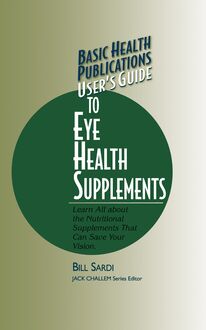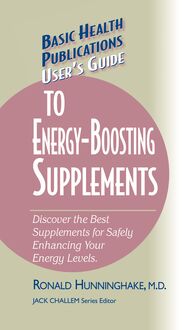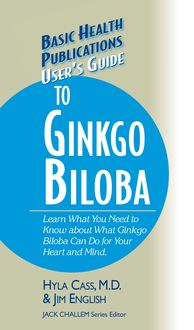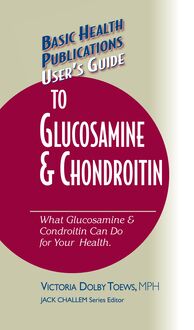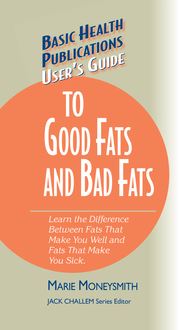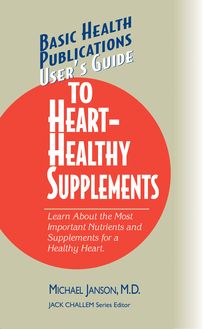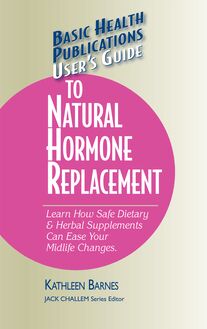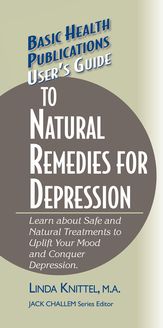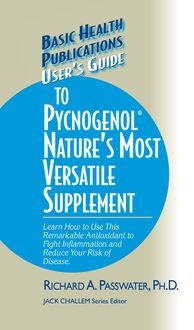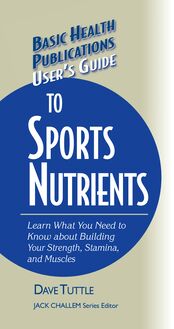-
 Univers
Univers
-
 Ebooks
Ebooks
-
 Livres audio
Livres audio
-
 Presse
Presse
-
 Podcasts
Podcasts
-
 BD
BD
-
 Documents
Documents
-
- Cours
- Révisions
- Ressources pédagogiques
- Sciences de l’éducation
- Manuels scolaires
- Langues
- Travaux de classe
- Annales de BEP
- Etudes supérieures
- Maternelle et primaire
- Fiches de lecture
- Orientation scolaire
- Méthodologie
- Corrigés de devoir
- Annales d’examens et concours
- Annales du bac
- Annales du brevet
- Rapports de stage
La lecture à portée de main
Vous pourrez modifier la taille du texte de cet ouvrage
Découvre YouScribe en t'inscrivant gratuitement
Je m'inscrisUser's Guide to Antioxidant Supplements , livre ebook
Découvre YouScribe en t'inscrivant gratuitement
Je m'inscrisEn savoir plus
Vous pourrez modifier la taille du texte de cet ouvrage
En savoir plus

Description
Sujets
Informations
| Publié par | Turner Publishing Company |
| Date de parution | 01 décembre 2005 |
| Nombre de lectures | 0 |
| EAN13 | 9781591206767 |
| Langue | English |
Informations légales : prix de location à la page 0,0298€. Cette information est donnée uniquement à titre indicatif conformément à la législation en vigueur.
Extrait
The information contained in this book is based upon the research and personal and professional experiences of the authors. It is not intended as a substitute for consulting with your physician or other healthcare provider. Any attempt to diagnose and treat an illness should be done under the direction of a healthcare professional.
The publisher does not advocate the use of any particular healthcare protocol but believes the information in this book should be available to the public. The publisher and authors are not responsible for any adverse effects or consequences resulting from the use of the suggestions, preparations, or procedures discussed in this book. Should the reader have any questions concerning the appropriateness of any procedures or preparations mentioned, the authors and the publisher strongly suggest consulting a professional healthcare advisor.
Series Editor: Jack Challem
Editor: Tara Durkin
Typesetter: Gary A. Rosenberg
Series Cover Designer: Mike Stromberg
Basic Health Publications User’s Guides are
published by Basic Health Publications, Inc.
8200 Boulevard East
North Bergen, NJ 07047
1-800-575-8890
Copyright © 2004 by Jack Challem and
Melissa Block
ISBN: 978-15-91-20676-7
All rights reserved. No part of this publication may be reproduced, stored in a retrieval system, or transmitted, in any form or by any means, electronic, mechanical, photocopying, recording, or otherwise, without the prior written consent of the copyright owner.
Printed in the United States of America
10 9 8 7 6 5 4 3 2 1
C ONTENTS
Introduction
1. Free Radicals and Antioxidants Demystified
2. What’s Your Oxidation Score?
3. Antioxidant Vitamins and Minerals
4. Antioxidants Made in the Body
5. Antioxidant Phytochemicals
6. Herbal Antioxidants
Conclusion
Selected References
Other Books and Resources
I NTRODUCTION
I f you could take a pill each day that would most likely lengthen your life span while significantly reducing your chances of ending up with occlusive heart disease, heart failure, cancer, stroke, Alzheimer’s disease, complications from diabetes, eye diseases causing blindness, rheumatoid arthritis, TMJ (temporomandibular joint) disorder, skin diseases, and muscle soreness following exercise, would you take it?
There’s no drug that will do all that , you might be thinking. That’s impossible! If there were, every doctor would have every patient on it. True. No drug can do this. But bear with us. Would you take such a pill if it existed?
What’s the catch? you may wonder. Will there be scary side effects? No. Is it outrageously expensive? No: at most, a few dollars a day; at least, a few pennies a day. Is it something that has been barely researched—something that no one really knows the risks and benefits of? No, this substance has been rigorously studied since the middle of the twentieth century. Will I have to trade my first-born child? Okay, now you’re being silly. Let’s have an answer: Would you take the substance or not?
Well, yes, of course!
So would we. What is this miraculous pill to which we are referring? It—or, more accurately, they —are the subject of this book, and of extensive research in laboratories and medical centers all over the world. We are talking about antioxidants.
It all goes back to a research chemist named Denham Harman, who in November 1954 had a “eureka!” moment. Dr. Harman thought he had figured out what drives the aging process.
In December of 1945, his wife had showed him an article about the work of Russian researchers who were attempting to extend the human life span, and it had intrigued him. Finally, sitting at his desk nine years later, it came to him: the cause of aging is oxidation.
His past work for the Shell Oil Company had involved free-radical chemistry, but at that time, no one had an inkling that there would ever be a connection drawn between free radicals and aging. No scientist had ever detected free-radical activity in human cells.
Once Dr. Harman had his “eureka” moment, he set about trying to find free radicals in living systems. This did not prove to be an easy task, but by the 1960s—with the help of many other scientists who came to see the brilliance of what he was doing—studies had established that free radicals were indeed a product of cellular metabolism (more on this later) and that supplementation with antioxidant substances reliably increased the life expectancy of lab animals.
At this writing, Dr. Harman is still hard at work. He is in his late eighties, yet he continues to rise at 4:30 each morning to go to his office at the University of Nebraska, Omaha, where he is professor emeritus. He sits at his desk for eight to nine hours a day, poring over scientific research and working on new research strategies that will—he hopes—permanently move antioxidant supplementation into the mainstream of modern life.
Dr. Harman’s lonely early research sowed the seeds for the current explosion of antioxidant research. There are more than 111,000 scientific studies, published in peer-reviewed scientific journals, that concern antioxidants and their activity in animal and human cells. No theory about chronic or age-related disease can last long without considering the role free radicals play in their onset and progression.
In these pages, you will learn exactly what a free radical is, and why it is harmful. You’ll see the connection between free radicals and diabetes, heart disease, cancer, and Alzheimer’s disease. And you’ll find out that a lot of the agents that help us resist the onslaught of free radicals—the antioxidants—may well be our best protection against these diseases.
In Chapter 1 , we’ll go into greater detail about the science of free radicals and antioxidants—just enough to give you a complete understanding of the chapters that follow. Have a pencil handy when you get to Chapter 2 because we’re going to establish just how much you need supplemental antioxidants with a not-too-scientific quiz. Chapters 3 , 4 , 5 , and 6 will get to the nitty-gritty, describing the research that has demonstrated the benefits of antioxidant vitamins and minerals; of endogenous (made in the body) antioxidants that work even greater magic when taken as supplements; and of antioxidants found in herbs and other plants, edible and not. Finally, in the Conclusion, we’ll help you see how to apply all the science to your life and your health.
Some of these nutrients will be familiar to you; some, you may already be using. Others will be totally new. We won’t mention anything in these pages that has not been thoroughly researched. Once you’ve finished reading this book, we’re sure that you will be convinced that antioxidant nutrients are an indispensable part of a healthy lifestyle—and that they can be used to prevent, and to help the body heal from, some of the most common health problems that threaten us from middle age onward.
CHAPTER 1
F REE R ADICALS AND A NTIOXIDANTS D EMYSTIFIED
Y ou’ve probably heard a lot of talk about free radicals and antioxidants. You may have made some attempt to figure out just what exactly they are, and you may even have tried to learn which antioxidants you should take to protect and promote good health. This book will take you to the next level: it will apprise you of what is currently understood about antioxidants, and it will help you decide which ones you ought to be taking.
Antioxidants are not drugs, although some drugs can have an antioxidant effect in the body. And although many researchers are currently transforming some natural antioxidants into drugs, the best antioxidants come directly from nature. Some come from foods; some come from plants that are not eaten as food; still others are made within the living cells of the body, and have been isolated and studied as nutritional supplements.
Simply put, antioxidants neutralize free radicals. Free radicals are atoms or atomic groups that contain unpaired electrons.
A Closer Look At Free Radicals
Think back to your high-school chemistry class. Remember that atoms are the stuff from which molecules are made; they are the smallest component of matter. See if you can visualize that plastic model your teacher pulled out to illustrate her description of an atom. There’s the nucleus, represented as a central sphere, half positively charged protons and half neutrally charged neutrons. Around the nucleus, electrons travel in an orbiting pathway. (Any modern chemist or physicist will tell you that this model is extremely simplistic, but it suits our purposes just fine.)
Oxidation
The loss of one of a pair of electrons.
Reduction
The gaining of an electron to complete a pair.
Like many people, electrons prefer to exist in a paired state. When an electron is removed from its pair, the remaining electron will indiscriminately pick up electrons from other atoms. (Again, the behaviors of human couples come to mind.) Electrons can be stolen from fats, proteins—even DNA, the genetic material that dictates the activity of every cell. This sets up a chain reaction that can cause substantial biological damage.
The loss of one of a pair of electrons is known as oxidation. When an electron is added back to complete the electron pairing, that’s reduction in action. Within virtually every cell of the bodies of animals and humans, a constant cycle of oxidation and reduction is taking place.
Antioxidants Save the Day
The body employs antioxidants to reduce free radicals and prevent the damage that they can do. Antioxidants donate electrons to free radicals, halting the chain reaction and stabilizing the atom that has been tearing around trying to find a match for its lovelorn unpaired electron.
Research in this field has established, beyond a doubt, that an overabundance of free radicals relative to antioxidants plays a substantial role in the development of age-related diseases and in the aging process. In other words
-
 Univers
Univers
-
 Ebooks
Ebooks
-
 Livres audio
Livres audio
-
 Presse
Presse
-
 Podcasts
Podcasts
-
 BD
BD
-
 Documents
Documents
-
Jeunesse
-
Littérature
-
Ressources professionnelles
-
Santé et bien-être
-
Savoirs
-
Education
-
Loisirs et hobbies
-
Art, musique et cinéma
-
Actualité et débat de société
-
Jeunesse
-
Littérature
-
Ressources professionnelles
-
Santé et bien-être
-
Savoirs
-
Education
-
Loisirs et hobbies
-
Art, musique et cinéma
-
Actualité et débat de société
-
Actualités
-
Lifestyle
-
Presse jeunesse
-
Presse professionnelle
-
Pratique
-
Presse sportive
-
Presse internationale
-
Culture & Médias
-
Action et Aventures
-
Science-fiction et Fantasy
-
Société
-
Jeunesse
-
Littérature
-
Ressources professionnelles
-
Santé et bien-être
-
Savoirs
-
Education
-
Loisirs et hobbies
-
Art, musique et cinéma
-
Actualité et débat de société
- Cours
- Révisions
- Ressources pédagogiques
- Sciences de l’éducation
- Manuels scolaires
- Langues
- Travaux de classe
- Annales de BEP
- Etudes supérieures
- Maternelle et primaire
- Fiches de lecture
- Orientation scolaire
- Méthodologie
- Corrigés de devoir
- Annales d’examens et concours
- Annales du bac
- Annales du brevet
- Rapports de stage
